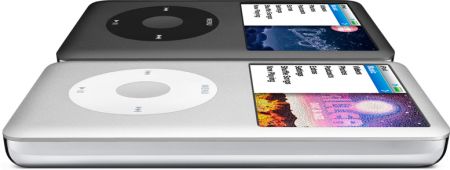By Dr. Kishore Budha, 1HQ
Is the success of iPod down to a cool design or is there a deeper cultural and sociological resonance that makes it powerful?
In 2009, US President Barack Obama gifted the Queen of United Kingdom an iPod loaded with Broadway hits and images and videos from her visits to the US in 2007. The anecdote affords us a useful opportunity to reject on the iPod’s resonance with its users and the symbolic references Obama may have been tapping into.
The iPod’s worth, besides its iconic user interface and the universal desire it generates, lies in the way it aids the management and personalisation of time and space making it a power cultural artefact. Instead of encouraging technological fetish, the iPod is synonymous with a culture of personalised sonic spaces that construct meaningful experiences in the treadmill of routine practices and movements through the urban landscape. This cultural proposition is suggested in advertisements for the music player, for example “Ride” by The Vines or “Hey Mama” by Black Eyed Peas where the users culturally and emotionally transform the spaces they traverse through. They are not just listening to music but are using it to personalise and animate the spaces they traverse through. Indeed, the advertising for iPod attempts to theorise culture and reimagine our relationship with cultural and technological artefacts.
Image Courtesy: Apple.com
Unlike the portable or personal music players that preceded it, the iPod allows users to develop strategies to select and plan their music “collection” through playlists and be able to play it at the “magical moment”. The playing of a particular tune or song at the precise moment helps listeners realise the aura of music in personalised ways never achieved before. However, we must remember that the iPod did not imagine or invent the idea of the mobile sonic envelope. The Walkman, Discman, MiniDisc and other MP3 players had already contributed to the portability of music. If music did not move with consumers, they were surrounded by music everywhere they went— homes, airports, shopping malls, stores. But unlike these devices and environments, the iPod personalises itself for its user through a range of models to suit environments and user needs, besides its easily accessible interface. The iPod effectively relegated the central proposition of digital music—compression and its impact on file size —to the background. Digital space paves the way for a tactile design, which not only transforms access but also the notion of collection as a cultural and social practice now routinised in rituals of virtual libraries, playlists, repositories and databases.
The combination of iPod’s declared “veneer of simplicity” and the resultant cultures of collecting inscribe the brand in the spaces of appropriation and reconfiguration of mass culture. Users can focus on their personal narratives, summoning their iPod to provide the most appropriate and desired sonic accompaniment at the precise moment. This positions the brand as an extension of active cultural collection, reproduction and recontextualisation. Thus, the iPod has transformed music consumption as well as the culture of urban landscape, forcing us to confront its sociological implications, namely: what does it mean to exclude the public places in favour of a bubble? This is not only throws open challenges, but also points to the future direction of personal technology, which can be located in technological trends such as augmented reality and cloud computing. EOA.
About the Author
Dr. Kishore Budha works as senior semiotician at 1HQ, a Windsor, UK-based Brand Agency. He is an active researcher and has published book chapters in the fields of technology and popular culture besides serving on the board of three peer-reviewed journals of popular culture and philosophy.

